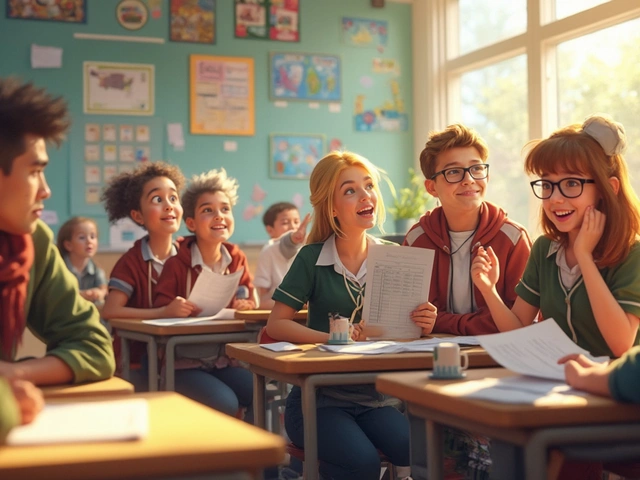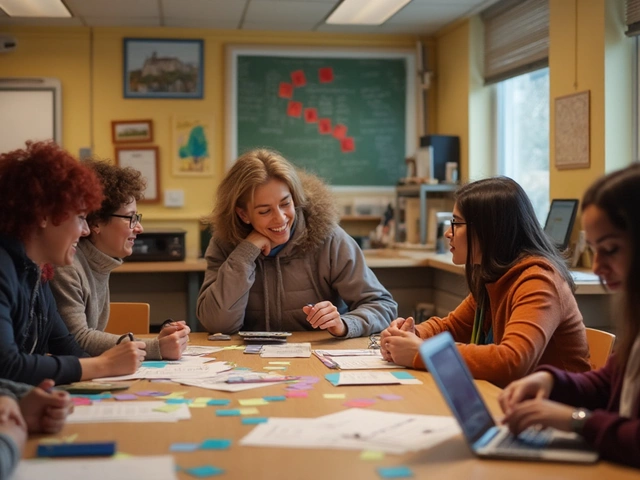Ever walk into a room and forget why you went there? Or maybe you keep forgetting names seconds after you meet someone. You’re not alone. Forgetting stuff is so common, but what if I told you there’s one trick that beats them all when it comes to memorizing almost anything? Spoiler alert: it’s not about repeating things a hundred times. There’s a smarter way, and it changes the game for students, professionals, or anyone who wishes their brain acted less like a sieve.
The Power of Association: Why Your Brain Loves Stories
Your brain isn’t wired for random facts. It craves connections, images, and stories—that’s how it remembers. The absolute best trick? Building outrageous, vivid scenes in your mind, a method called visualization and association. Let’s break it down: imagine you need to remember a grocery list—milk, bread, apples, and toothpaste. Don’t chant the list over and over. Instead, turn them into a mini-movie. Picture a giant loaf of bread brushing its teeth with a tube of apple-flavored toothpaste, while milk rains from the sky. Ridiculous? Yes. Memorable? Absolutely. The more bizarre your story, the better it sticks.
This is at the heart of the “memory palace” technique. Ancient Greeks used it, memory champions still swear by it. The idea is to create a familiar place (your home, for example), then drop the things you need to remember along a route inside. Want to remember a speech? Assign each point to a room in your mental palace. As you “walk” through, your brain fishes out the memory from those story-fueled spots.
Here’s the kicker: In 2017, researchers from Radboud University actually scanned brains of memory champions. The scans found they weren’t born different; their power came from using visual association techniques. Just practicing these mental games led to huge jumps in recall—even for ordinary folks.
But why does this trick crush the old “repeat till you drop” method? Repetition stores info in short-term memory (like sticky notes that fall off). Stories, images, and connections land memories smack in your long-term filing cabinet. You don’t just recognize the word—you remember it, inside-out and backwards.
Learning the Method: Steps You Can Use Today
It’s one thing to know the best trick to memorize. It’s even better if you know how to actually use it. Here’s how you do it in real life, broken down step-by-step. No complicated brain science here, just simple moves.
- Pick What You Want to Remember: Say you need to study a list of history facts, new vocabulary for Spanish, or even a friend’s wedding details.
- Find the Visual: For each item, pick a strong, visual image. The weirder, the better. If you want to remember “Queen Victoria,” picture her riding a scooter while eating pizza—the specifics are what matter. The brain loves crazy.
- Create the Story: Now link each thing together. Wrap everything into a mental scene. Maybe Queen Victoria rides her scooter into a giant dictionary, while a Spanish bull waves a wedding invitation. This isn’t about logic, it’s about impact.
- Place the Images: Use a familiar place like your childhood home to “drop” these visuals along a route. See her in the hallway, the bull in the kitchen, etc. This uses your natural memory for places—something the brain rarely forgets.
- Review by Walking: Close your eyes and mentally walk through your memory palace. Each room reveals part of your story, so you pick the info out of your brain with ease.
- Recall and Repeat: Test yourself. The brain loves recall. With every “walk,” your memory gets stronger.
Sound silly? The people who win world memory championships use this. Dominic O’Brien, eight-time World Memory Champ, swears by chaining stories and placing them in a palace. If memory is a muscle, this is your gym—and results come fast.
Sometimes, a mental story isn’t enough—especially for names and faces, or facts that feel dry. Here’s where “chunking” helps. Instead of remembering a phone number as 1234567890, split it up—123-456-7890. The same goes for study facts—don’t tackle a whole textbook, break it into themed chunks, make a story for each, and let your memory palace tie them together.

The Science: Why This Memory Trick Works Wonders
If this memory trick sounds like magic, the science backs it up. Let’s look at what actually happens when you build these mental stories. Neuroscientists at Stanford and MIT have found that your brain’s hippocampus lights up when you connect facts with images or places you know. What’s especially cool? When you see or imagine a scene (maybe a cat juggling oranges in your bedroom), your brain reacts nearly the same as if it were a real memory. That’s why visualization is so sticky.
For anyone who doubts it, just consider this wild statistic: in the 2006 World Memory Championships, participants memorized decks of cards in less than two minutes. They weren’t robots—they used the memory palace method with silly visuals. Regular folks who trained for just six weeks saw memory improvements of more than 30%, according to a study published in the journal Neuron in 2017.
So how come we don’t all use this? The problem is, most schools and jobs push repetition and rote learning because it's quick to teach but slow for the brain to lock in. If you ever spent a night staring at flashcards, only to forget everything during the test, now you know why.
The memory palace isn’t just for lists or foreign words. You can use it for speeches, technical data, or even directions. For example, to remember the main points of a presentation, put each key idea (visualized as a wacky character or object) in a different spot along a familiar walk to work. On game day, take that walk in your head, and the ideas will pop up right where you put them.
| Memory Method | Average Recall Improvement | Real-Life Example |
|---|---|---|
| Rote Repetition | 5-15% | Reciting flashcards aimlessly |
| Chunking | 20-30% | Splitting a phone number or concept group |
| Visualization & Association | 50-70% | Turning facts into a wild mental movie |
| Memory Palace | Up to 300% | Placing memories in a mental building |
Want a shortcut? Combine association with “spaced repetition.” Instead of cramming, review your story-palace in short bursts—right after you learn, then after a few hours, again the next day, then a week later. This “forgetting curve” hack locks in memories for months. Even language learning apps like Duolingo and Anki use similar ideas because they work.
Everyday Applications: How to Make This Trick Part of Your Life
Alright, enough theory—how do you actually use this memory trick every day, without feeling like one of those weird memory magicians? The answer: start small and make it part of routines you already have. If you swap repetition for crazy mental stories just once a day, you’ll be shocked at how fast your recall improves.
Take remembering names, something tons of people struggle with. When you meet “Samantha,” picture her holding a samurai sword, wearing a huge salmon as a hat. Next time you see her, the salmon and sword combo in your mental movie will make her name jump out, without awkwardness.
Studying for an exam? Turn each key point into a zany character, walk them through your memory palace, and after a few short reviews, watch the details stick.
Need to ace a meeting at work? Assign key info to objects around the meeting room you know well. During the meeting, mentally “touch” these spots, and your focus sharpens with each idea recalled.
This trick isn’t about superhuman talent. It’s about letting your mind work the way it was designed: with images, places, and stories. Why do you remember every scene of your favorite movie, but not the formula for compound interest? Stories burn memories deeper. Now you get to build your own.
- Start with short lists, names, or simple facts. Once that feels easy, up the difficulty—try poems, speeches, or difficult concepts.
- Make your visuals personal. A silly image that only you understand is perfect—it’s your brain, after all.
- Use this for things you care about most. Birthdays, passwords (broken into image-filled chunks, not stored online), travel directions, or fun trivia.
- Teach someone else the trick—the best way to master something is to show it to a friend or sibling.
Don’t stress about remembering everything. Modern life dumps information on us like never before. But when you really want to remember something—and do it fast—building a wild mental story is the secret route past your brain’s usual “in one ear, out the other” habit. Try it on your next to-do list or that history quiz. Your brain will thank you, and you’ll wonder why nobody taught you this sooner.






